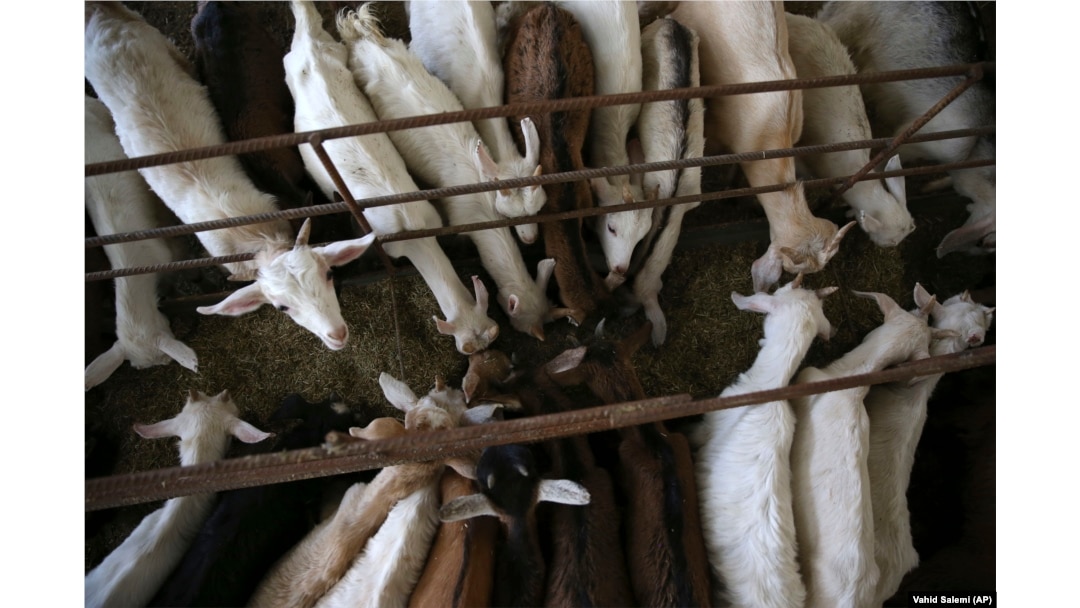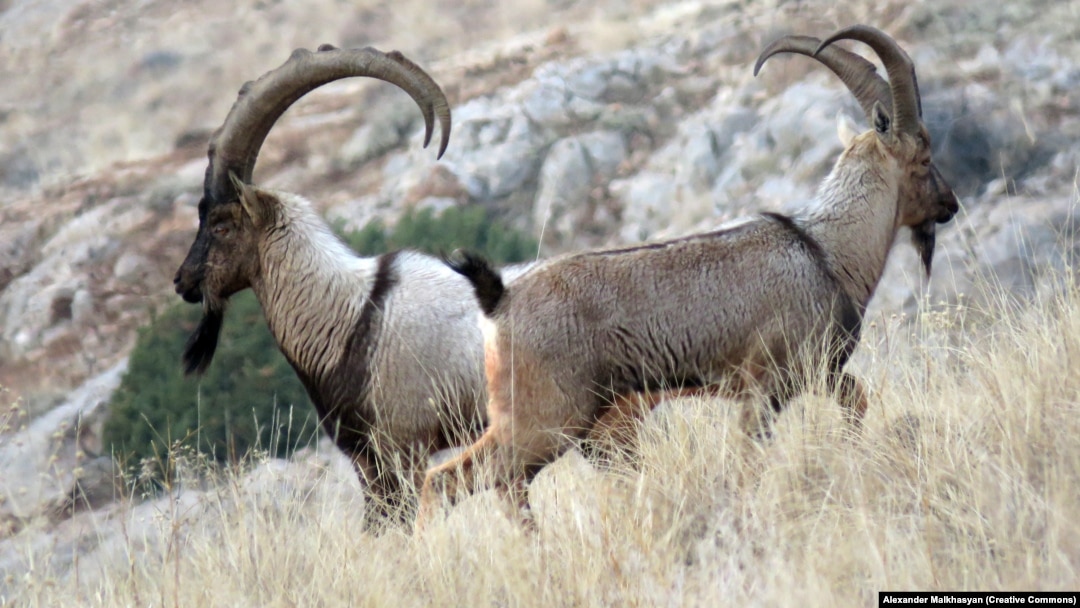Frequently the stuff of fairy tales, the relationship between humankind and goats just got a new chapter.
A new East-West study based on archaeological and genetic research says ancient inhabitants of a mountainous nook of what is now northwestern Iran undertook one of the earliest defining features of human civilization, domesticating goats that differed significantly from their wild cousins at least 10,000 years ago.
Nineteen Iranian and international scientists authored the new study, published this month in the Proceedings of the National Academy of Sciences of the United States.
They say the genetic trail points to "herded and hunted" goats being gradually domesticated in the region, at the juncture of the Eurasian and Arabian tectonic plates, before 8200 B.C.
The transformation to domesticated crops and livestock is known to have occurred in the so-called Fertile Crescent before "fully integrated agricultural economies" appeared there around the same time.

Goat kids at the Behdoush Dairy Farm outside the city of Mahmoudabad in northern Iran. Collaboration between Western and Iranian researchers on the the world's oldest livestock genomes have helped to pinpoint when humans first tamed goats and otherwise sparked the Neolithic Revolution. (file photo)
Such innovations were crucial to the course of human civilization, allowing for more populous settlements and the more complex societies needed to sustain them.
The Zagros Mountains abut the Fertile Crescent -- a swath of the Middle East thought by scientists to have been the cradle of human civilization -- including the earliest irrigation and agricultural efforts, as well as inventions like writing and the wheel.
Some scientists have long regarded the more western portion of the Fertile Crescent as the "epicenter" of such advances.
But the authors of the new study say that theirs and other recent evidence helps refute notions that the more easternmost area was "a backwater, slow to receive and embrace domesticates and food-producing technologies from farther west."
The remains they studied came from late Stone Age sites in Ganj Dareh and Tepe Abdul Hosein, in the western Iranian Zagros Mountains.
Ganj Dareh
They say it is clear that area hosted at least one of the earliest aspects of the emerging domestication practices.
"These genomic data present a singular opportunity to deepen our understanding of the consequences of goat management at the dawn of domestication," the researchers wrote.
The remains from sites of "goat management and husbandry" that they studied "support management of genetically domestic goat by circa 8200 B.C., and represent the oldest to-this-date reported livestock genomes."
The bezoar ibex that inhabits mountain slopes from Turkey to Iran is thought to be the common ancestor of all modern domestic goats, and it was the species that the ancient humans in this study "transitioned" to captivity.
They say their testing demonstrated that "managed goats were genetically distinct from wild goats at this early horizon."
In a period about 12,000 years ago that has been dubbed the Neolithic Revolution, many humans transitioned from hunting and gathering to settling and farming, frequently in larger groups.
Saanen goats at the Behdoush Dairy Farm in northern Iran. Animal geneticist David MacHugh says the researchers appear to have located "the 'ground zero' for goat domestication, or close to it." (file photo)
That period in the Fertile Crescent coincided with a flurry of innovation that included planting and harvesting crops like cereals and chickpeas, and herding goats, cows, sheep, and pigs.
The domestication of such livestock entailed limiting the animals' movements, selectively culling males, and breeding them for food, body parts, or work.
Animal geneticist David MacHugh of University College Dublin, who was not involved in the study, told Science Magazine that the researchers appear to have located "the 'ground zero' for goat domestication, or close to it."
A chill in relations between Iran and the United States since the 1979 Iranian Revolution overthrew the shah and ushered in a theocratic, anti-Western government has hampered scientific cooperation for decades.
Decades of international sanctions presented obstacles to direct collaboration, not only in carrying out research but also in attending conferences and even reading the same scientific literature.
Three years after a 2015 deal between major world powers and Iran exchanged sanctions relief for checks on Tehran's disputed nuclear program, the United States reimposed harsh sanctions in a fresh effort to punish Iran's leadership.
Iran has also eyed its own scientific community with suspicion.
A well-known Iranian-Canadian founder of the Persian Wildlife Heritage Foundation (PWHF), an Iran-based conservation group, died suspiciously in custody in 2018 after being detained for espionage that reports suggested was linked to the use of camera traps and other wildlife-monitoring tools.
SEE ALSO: Fellow Ecologists Among Skeptics Over Iranian 'Suicide' In CustodyIranian authorities accused the professor, Kavus Seyed-Emami, and colleagues of posing as environmentalists to collect "classified information about the country's strategic areas under the guise of carrying out scientific and environmental projects."
At least six fellow PWHF experts were later sentenced to lengthy prison terms for allegedly "collaborating with the enemy state of the United States" in a case decried by international rights groups.


